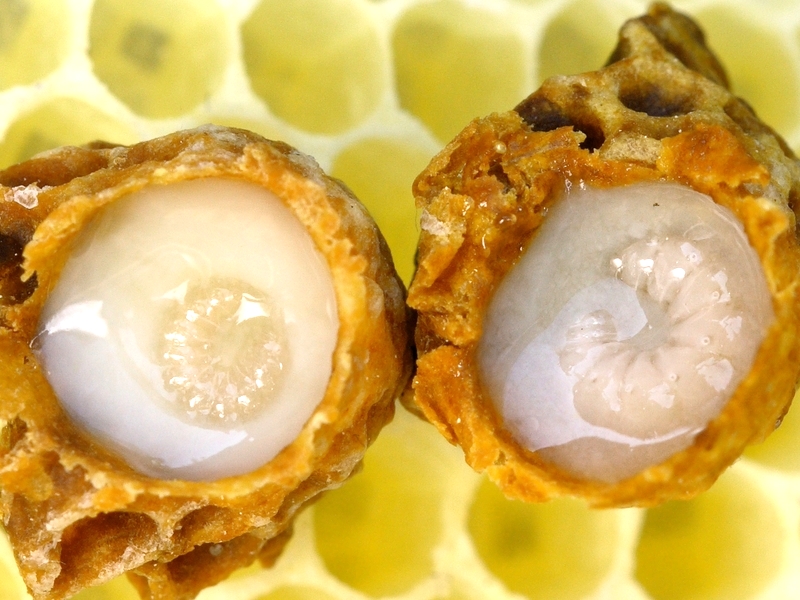Royal jelly is the key to every colony’s development. Its delicacy and low production requires a true expertise from beekeepers.
The mystery of royal jelly
As its name indicate, the royal jelly is the main source of nutrition of queens. It comes from young bees pharyngeal glands. Every single larva is fed royal jelly during their first few days, but only queen larvae keep being fed royal jelly post the larva phase.
Its unique composition allow queen larvae to grow in an extraordinary manner: its initial weight multiplies by 1 800 within 5 days! It also allow adult bees to lay over a thousand eggs per day, at the highest rate of the season.
The royal jelly is, to some extent, predigested pollen. Its chemical structure is therefore very close to pollen, with much higher percentages of proteins. Here is a simplified composition chart of royal jelly: water (66%), proteins (13%), carbohydrate (14,5%), lipid (4,5%), and others (2%).
The different ways of using royal jelly
Royal jelly can easily be liken to meds because of its efficient and
massive side effects. Firstly, it is usually recommended by doctors to
better our biological strength, usually to elders and people in
recovery, or to help fight depression. It can also be use by overall
healthy people for energetic purposes and to beat states of stress and
fatigue. Its commercialized form is the same state as freshly collected
by beekeepers or mixed with honey.
Also, it is largely used in the cosmetic industry (cream, shampoo, anti-age serum…) and the pharmaceutical industry.

